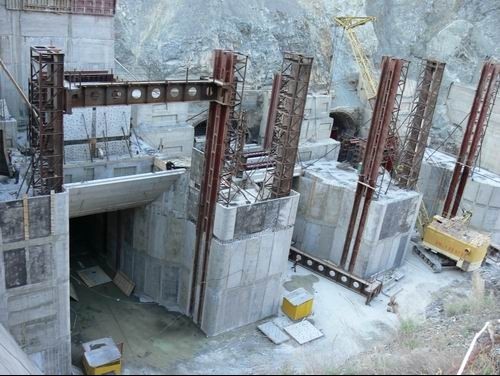Uzbek media reports say Uzbekistan and Kyrgyzstan are continuing to discuss specific steps on a joint implementation of the Kambar-Ata-1 hydroelectric power plant (HPP).
“Uzbekistan will participate in construction of the Kambar-Ata-1 HPP. A working group on this project has held its first meeting in Tashkent and outlined specific steps on the joint implementation of the project,” Kyrgyz Ambassador to Uzbekistan Daniyar Sadykov told reporters in Tashkent.
Recall, Uzbekistan and Kyrgyzstan in early October this year signed a memorandum of understanding (MoU) on cooperation in implementing the Kambar-Ata-1 HPP project.
Meanwhile, downstream Uzbekistan had previously opposed the project, as the initial filling of the reservoir, and annual evaporation henceforth, would reduce the flow available in the Syr Darya for irrigation.
The Kambar-Ata 1 Dam is a proposed dam on the Naryn River in central Kyrgyzstan. One of six planned to be built on the river, it will become one of the largest dams in the world at approximately 275 meters high and containing about 370 million cubic meters of rock and earth. The Kambar-Ata-1 Hydro Power Plant (HPP) at the base of the dam will have a capacity of around 2,000 megawatts.
The dam will be created by using about 440,000 metric tons of explosives to blast the canyon walls, causing landslides that will block the Naryn River. This strategy will save time and money over conventional embankment building methods. The hydroelectric power plant, spillway and other associated structures will be completed separately.
The first attempt to build a dam at this site was in 1986, but construction stopped due to the collapse of the Soviet Union in 1991. The project was reinstated in 2008 and will be largely funded by US$2 billion in Russian aid, promised in return for “enhanced economic and security cooperation” with Russia. It is hoped that this dam and others on the Naryn will help Kyrgyzstan become a major electricity exporter, helping the country's fragile economy. Test drilling work at the dam site began in August 2013.
Experts interviewed by the International Crisis Group have indicated that Kambar-Ata-I and other such projects could improve water management in the region since the dams will collect and store water that could later be released for irrigation.




